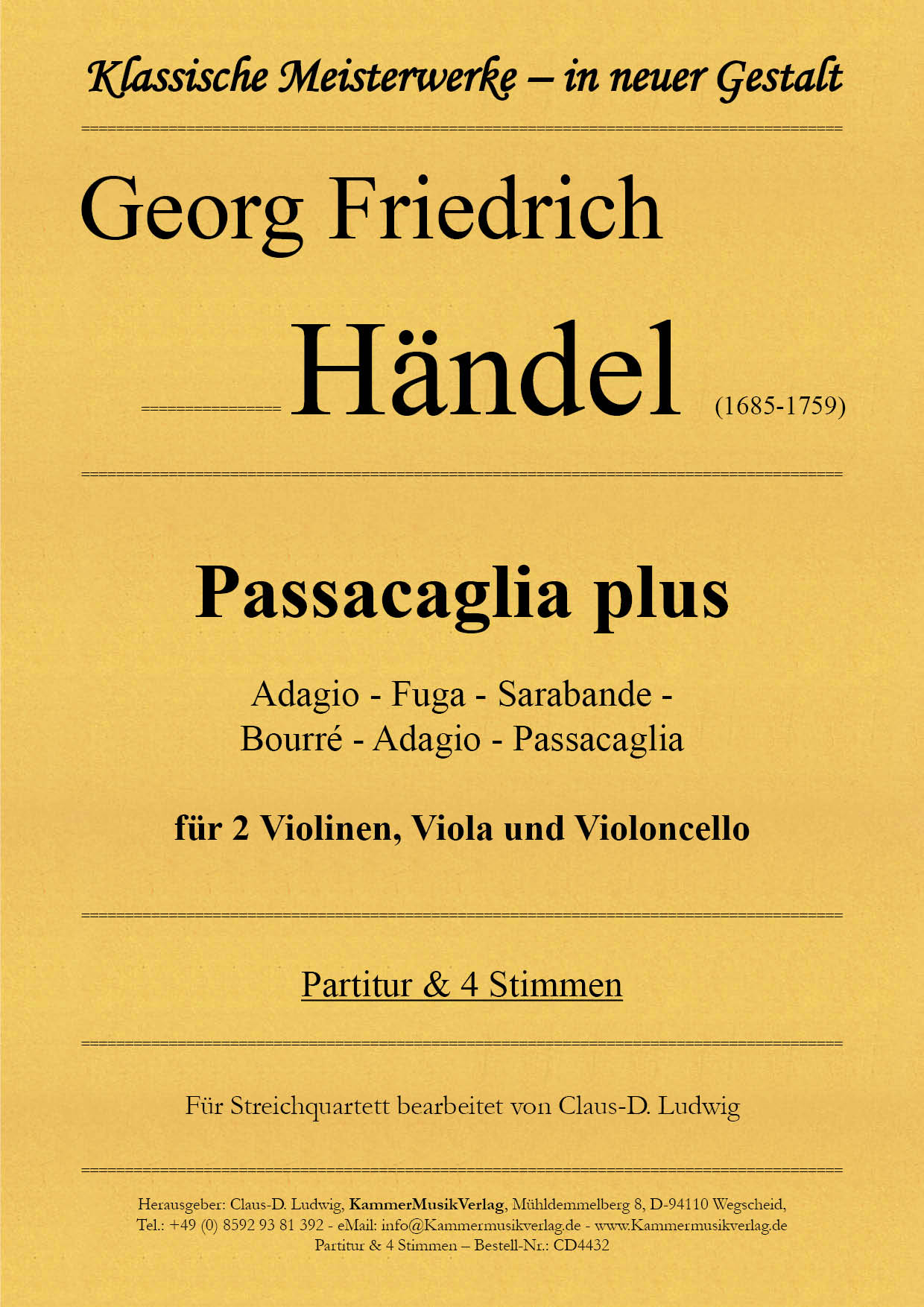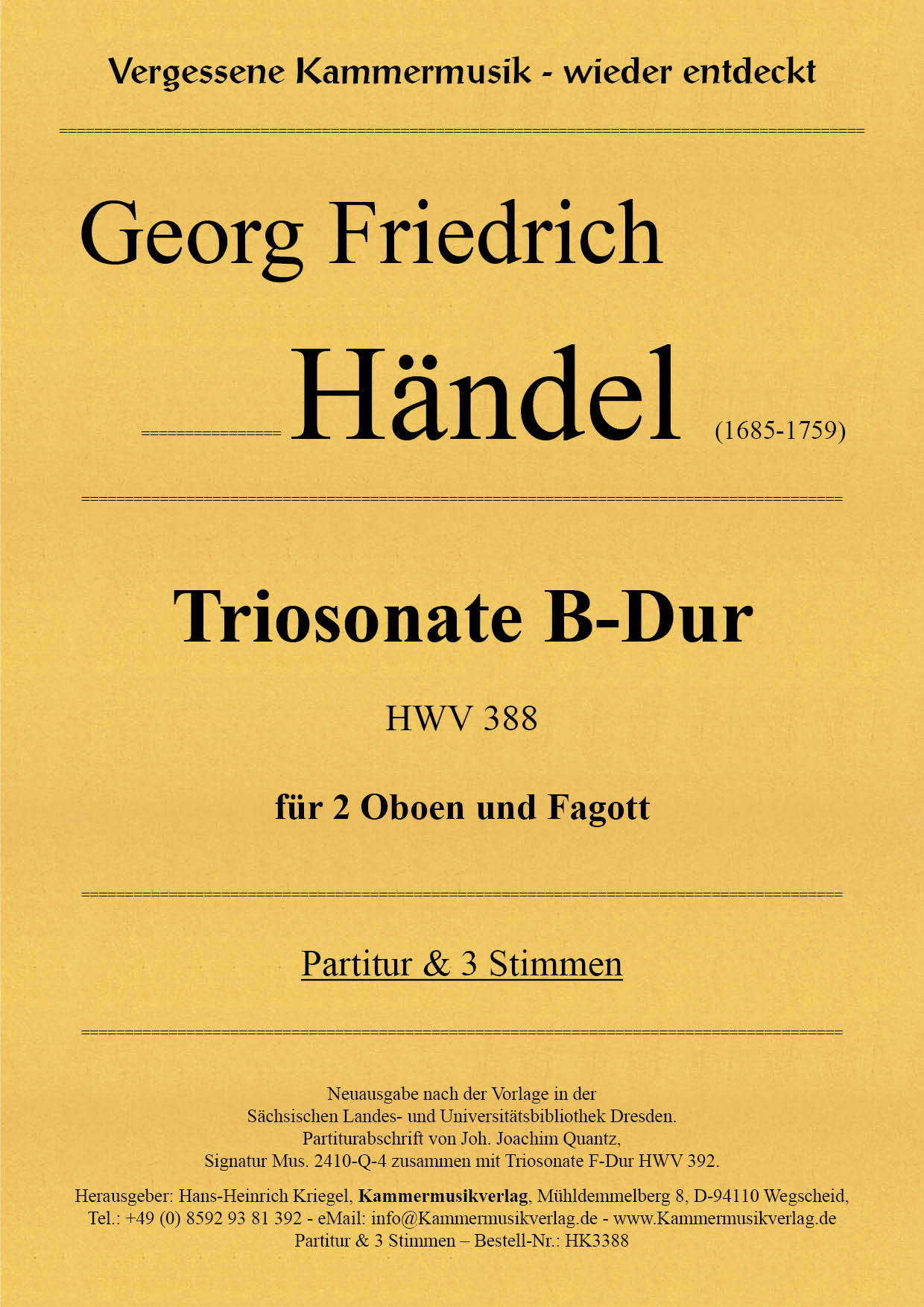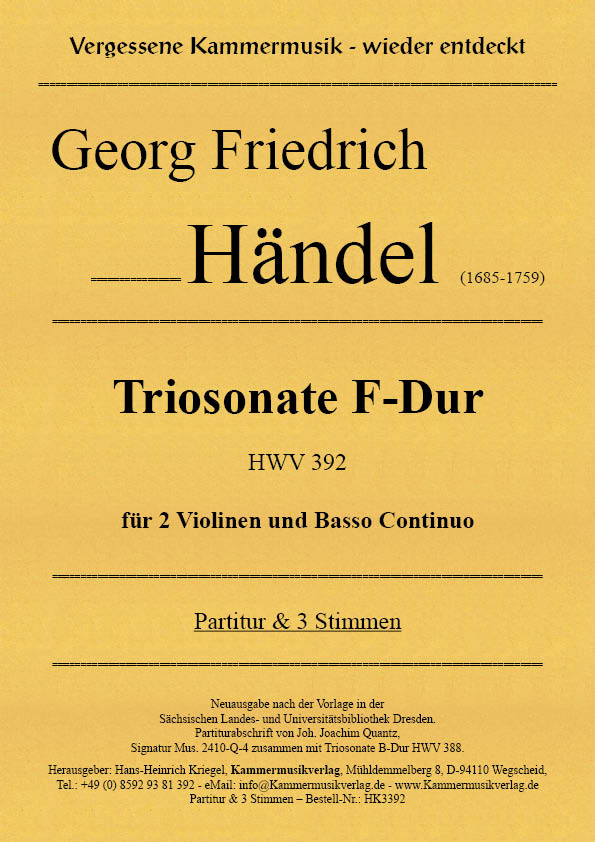-
Composers
- A
- B
- C
- D
- E
- F
- G
-
H
- Halm August (1869–1929)
- Hammerschmidt Andreas (1611–1675)
-
Händel Georg Friedrich (1685–1759)
- Hänsel (Haensel) Peter (Pierre) (1770–1831)
- Hartmann Emil (1836–1898)
- Haslinger Tobias (1787–1842)
- Haß Reimund
- Haydn Joseph (1732–1809)
- Haydn Michael (1737–1806)
- Heidenreich Joseph (1743–1821)
- Helsted Gustav (1857–1924)
- Henning Carl Wilhelm (1784–1867)
- Herrmann Eduard (1850–1937)
- Herz Jacques (1794–1880)
- Hoffmeister Franz Anton (1754–1812)
- Prinz von Hohenzollern Albrecht (1898–1977)
- Holbrooke Joseph (1878–1958)
- Hoth Georg (Ende 19. Jhdt)
- Hummel Johann Nepomuk (1778–1837)
- Humperdinck, Engelbert (1854-1921)
- Hus-Desforges Pierre-Louis (1773–1838)
- J
- K
- L
- M
- N
- O
- P
- R
- S
- T
- V
- W
- Z
- Instrumentations
- Folk music
- Klezmer music
- 21st century
- Audio
- Early music from the 18th century.
Filter products
–
Handel, Georg Friedrich - Passacaglia plus for string quartet
€19.00*
Handel, Georg Friedrich
Passacaglia plus
Adagio - Fuga - Sarabande - Bourré - Adagio - Passacaglia
for 2 violins, viola and violoncello
For string quartet arranged by Claus-D. Ludwig
2Vl, Va, Vc
Score & 4 parts / 27 pages
Händel, Georg Friedrich - Trio Sonata in B flat major
€19.00*
Händel, Georg FriedrichTrio Sonata in B flat majorfor 2 oboes and bassoonHWV 388
For the composition of the first movement, as in the F major Sonata HWV 392, Handel took up the sixth aria 'My soul listens in seeing' from the collection “9 German Arias”. Handel composed this volume of arias in London between 1724 and 1727 based on texts by the Hamburg pastor Barthold Hinrich Brockes. Handel used motifs from the first movement and movements 2 and 3 of the sonata for the overture to the oratorio Esther. The music of the 4th movement can be found among others. in the organ concerto in B flat major. The very accurate handwriting Quantz ‘is flawless. Additional dynamics are given in brackets. Additional slurs are shown in dashed lines. In movement 2, Allegro, the last two 16th notes b and c are written in bar 47 in the basson, b and c sharp would also be possible In movement 3 Larg (b) etto, Quantz only writes staccato strokes in bars 2 and 3 in the basson, although this should also apply to the other corresponding positions.Score & 3 parts / 27 pages
Handel, Georg Friedrich - Trio Sonata in F major
€20.00*
Output variant:
Score and parts
Handel, George FridericTrio sonata F majorfor 2 violins and basso continuo(with suspended continuo part)HWV 392For the composition of the first movement, as in the F major sonata HWV 392, Handel took up the sixth aria 'Meine Seele hört im Sehen' from the collection "9 German Arias". Based on texts by the Hamburg pastor Barthold Hinrich Brockes, Handel composed this volume of arias between 1724 and 1727 in London. Handel used motives of the first movement and movements 2 and 3 of the sonata for the overture to the oratorio Esther. The music of the 4th movement can be found, among others, in the organ concerto in B flat major. Quantz's very accurate handwriting is flawless. Added dynamics are in brackets. Completed slurs are shown in dashed lines. In movement 2, Allegro, the last two 16th notes b and c are written in the basso in measure 47; b and c-sharp would also be possible In movement 3 Larg(h)etto, Quantz writes staccato strokes in the basso only in measures 2 and 3, although these should also apply to the other corresponding passages.2 Vl, Vc (and with suspended continuo part)score & 3 parts / 28 pages
Score & 3 parts (suspended) / 32 pages



